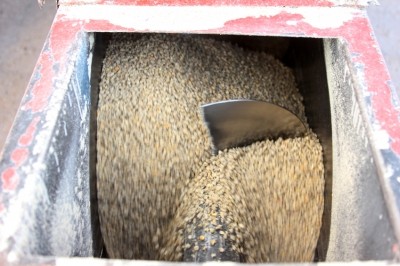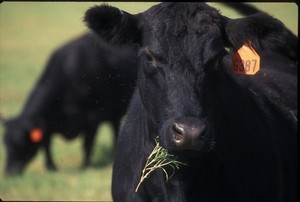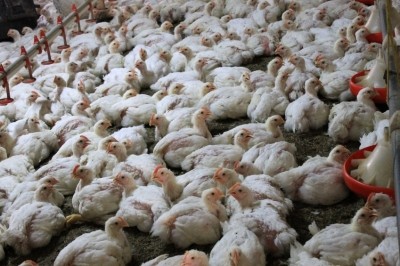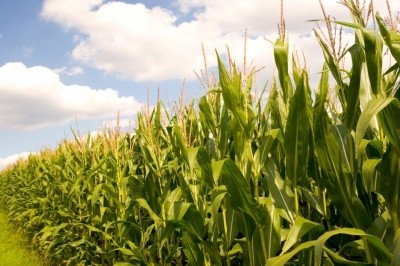Early fears for crop toxin levels diminish in the US
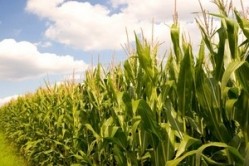
Heavy rains across the US Midwest in the spring and summer had generated concerns about the growth of plant diseases and complications like mycotoxins, however, for several states these concerns haven’t been realized as harvests start, said several crop experts.
“Whenever there’s lots of rainfall you worry about lots of things,” said Emerson Nafziger, professor of crop sciences, extension specialist and research education center coordinator at the University of Illinois. “But it started to dry off and August was below average rain fall for some of the Corn Belt and September and October were considerably below.”
Positive results
In Illinois, there has been some yield damage from standing water, but there haven’t been major disease outbreaks, Nafziger told FeedNavigator.
“The second half of the season, when grain is forming, wasn’t super wet, so it was a pretty good pattern in terms of producing good quality grain,” he said. “I haven’t heard too many reports about being people concerned.”
The drier second part of the summer also didn’t have the high temperatures necessary to generate problems with aflatoxin, he added.
“It’s often a problem down in the southern great plains and it gets its start in July, and if there are moderate temperatures in July, we usually don’t see much problem,” he said. “The biggest concern I hear about corn is price, not quality.”
Similarly, corn quality has been fairly good for the early harvest in Iowa, said Steve Ensley, vet diagnostic and production animal medicine at Iowa State University.
“So far, the 2015, in the corn that we’ve tested, there have been some fumonisin mycotoxins, but haven’t seen aflatoxin or vomitoxin (deoxynivalenol or DON) or zearalenone – [in terms of] the corn we’ve tested since they started harvest in the last month, the quality has been really good,” he said.
The autumnal weather hasn’t had a negative effect on harvest.
“Overall, it’s been a really good, dry harvest so far,” he said. “We feel like the quality is better than last year.”
Thought in Iowa, grass tetany, a nutritional disease that cattle get from grasses high in water content and potassium and low in other nutrients, such as magnesium and calcium, has been a problem through September, an atypical presentation said Ensley.
“Normally we don’t supplement cows in the fall for magnesium because they don’t need it,” he said. "Typically that’s not something we’ve had to do in the fall.”
A dry August also helped crop development and may have prevented some disease spread in Ohio’s feed crops said Anne Dorrance, professor of soybean pathology and host resistance at Ohio State University.
“Through the end of the season, especially in corn and soybeans, we had a lot of leaf disease, but the dry weather in August really shut the leaf diseases down,” she said.
Michigan also expects to have a good quality corn and wheat crop, but it has seen some challenges with different diseases, experts said.
Challenges present
Michigan did see some levels of mycotoxin growth, particularly with DON, in white wheat, said Martin Nagelkirk, senior educator with Michigan State University Extension.
“We’ve had levels that were a bit of a concern across the state,” he said. “It wasn’t a serious year, but fairly significant, enough that all the elevators were doing a lot of testing for DON and that was true for almost the entire state.”
Some parts of the state saw crop levels up to 8 parts per million, he said. Producers can start to see discounts at the grain elevators when amounts go past 1.5 to 2 parts per million.
However, the crop is known to be sensitive to DON and prevention measures, including crop rotation and use of fungicides, can bring down levels, he said.
Corn growers should watch for ear rot, said Martin Chilvers, assistant professor and feed crops specialist with Michigan State University Extension.
“We did some scouting a few weeks ago for diplopia,” he said. “It degrades the ears, but in the US there’s no mycotoxin associated with that. We didn’t find much, but we did find an amount of gibberella ear rot especially in the tips of ear.”
That disease can become an issue if corn isn’t correctly dried down, he added.
In terms of corn crop quality, he said, it should be good unless the harvest period starts to see more moisture.
The soy crop has done better than past years in terms of challenges from white mold, he said. “A few people were hit, but not to the same levels, and in terms of other diseases, [there was] a little bit of sudden death syndrome,” he added.
